Armed helicopters came into widespread use in Vietnam in the early
Sixties. Limitations of the modified armed utility helicopters used led to the specially configured attack helicopter.
Bell Helicopter had already evolved the
first attack helicopter design, based on the use of UH-1 Huey dynamics (rotors,
drives, engine) with a new fuselage. Bell also built a company-sponsored,
scaled-down prototype using H-13/Model 47 series components, its Model 207 Sioux Scout
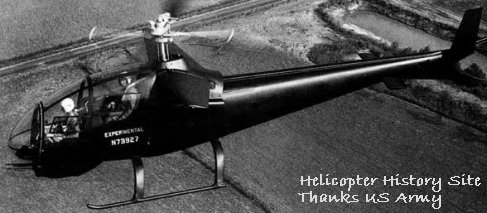
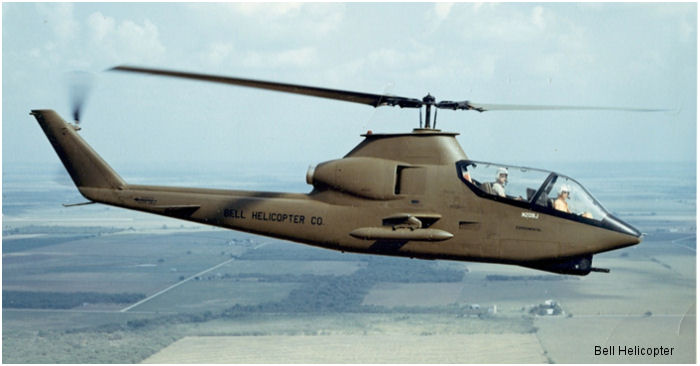 Bell 209 prototype first flight in 1965. Notice retractable landing gear.
Bell 209 prototype first flight in 1965. Notice retractable landing gear.
While the US Army went forward with its sophisticated AAFSS (advanced aerial
fire support system) program, the Lockheed AH-56 Cheyenne,
to provide an attack helicopter,
Bell proceeded with another company-sponsored prototype, the Model 209,
using the Huey dynamics and an airframe similar to the initial design.
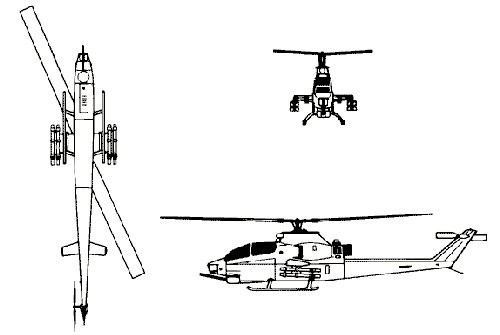
The 209 first flew in September 1965. The urgent need for greater armed helicopter
performance in Vietnam and the success of the 209 led to US Army orders for prototypes and production models of the 209 as interim attack helicopters, pending production of the
AAFSS (which, finally, was never to occur).
Carried over from the 209 were the slim fuselage with tandem cockpits (gunner in front of pilot), the Lycoming T-53 engine, stub wings with store stations and the under nose turret. Its retractable skid landing gear was replaced by a fixed gear.
As the AH-1G, the Huey Cobra went into combat in September 1967. The US Army modernized this aircraft in the 1970s with a three-step program called AH-1S which eventually lead to the AH-1P/E/F
The US Marines also operated armed Hueys in Vietnam, and ordered their own version of the Cobra in May 1968. Featuring the Pratt and Whitney Twinpac T400 engine (two 900-hp turboshaft engines coupled together) giving an overall increase in installed power, the AH-1J Sea Cobra included a new nose turret gun, the three barrel XM-197 20mm and other improvements.
Carried over from the 209 were the slim fuselage with tandem cockpits (gunner in front of pilot), the Lycoming T-53 engine, stub wings with store stations and the under nose turret. Its retractable skid landing gear was replaced by a fixed gear.
As the AH-1G, the Huey Cobra went into combat in September 1967. The US Army modernized this aircraft in the 1970s with a three-step program called AH-1S which eventually lead to the AH-1P/E/F
The US Marines also operated armed Hueys in Vietnam, and ordered their own version of the Cobra in May 1968. Featuring the Pratt and Whitney Twinpac T400 engine (two 900-hp turboshaft engines coupled together) giving an overall increase in installed power, the AH-1J Sea Cobra included a new nose turret gun, the three barrel XM-197 20mm and other improvements.
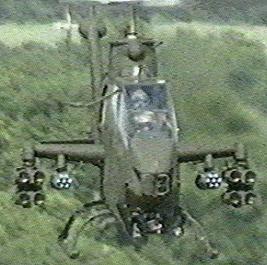
With increasing demands for higher performance, particularly greater
load-carrying capability in high temperature conditions, Bell developed
improved dynamic components for the Huey series. Application of these components,
which included a larger diameter rotor, led to the 309 King Cobra in the
early Seventies. This allowed an increased payload, providing more combat
capability. The subsequent Marine-ordered version of the Sea Cobra
( with some work based on the Bell 409 (YAH-63), which was Bell's proposal for the AAH competition
won by the Hughes AH-64 Apache )
was designated the AH-1T. In addition to the modifications for improved combat
effectiveness, major efforts were made to incorporate the lessons of the
Cobra experience in achieving greater reliability and maintainability. With
the TOW missile system added to its weapons, the AH-1T gave a ground
attack capability far beyond that first envisioned by their predecessors
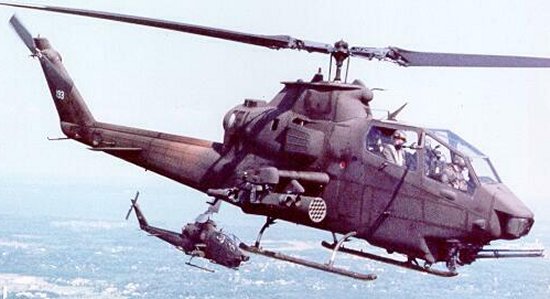
The 21st century saw the introduction of the final variant, the Bell 449 AH-1Z Viper
AH-1 Cobra helicopters in the Vietnam War
See Also:
| User Contributed Notes | ||
| Add note to this page |
